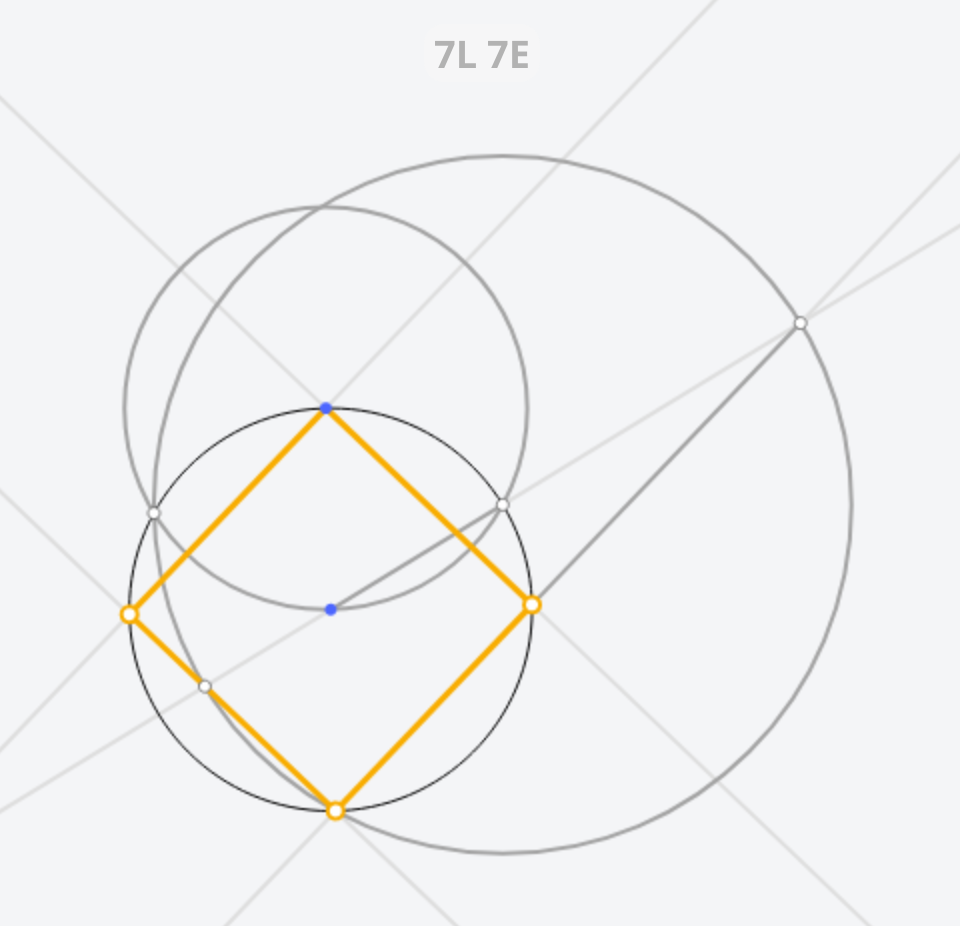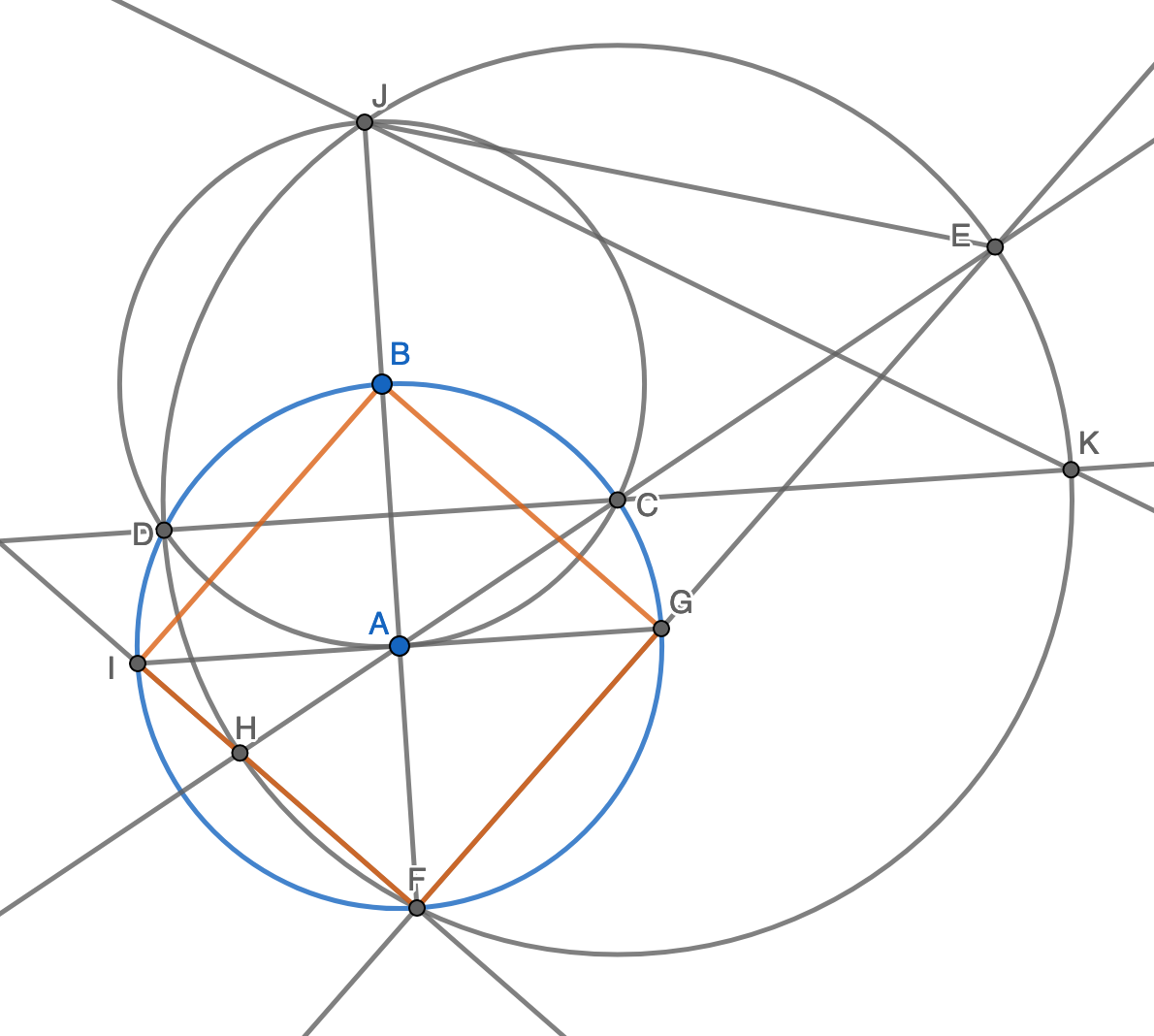Euclidea 1.7 SquareInCircle
6L is obvious, here we focus on 7E. Solution is below.

Detailed steps:
- Given circle \(A\) and vertex \(B\) .
- Construct a circle with center \(B\) through \(A\) . Two circled intersect at \(C, D\) .
- Construct a circle with center \(C\) and through \(D\) . Intersect with existing circles at \(F, J \)
- Construct line \(AC\) , intersect with circle \(A\) at \(H, E\)
- Construct segment \(EF\) and \(HF\) , intersecting with circle \(A\) at \(G, I\) .
- \(BGFI\) is the target square.

Proof:
- Construct line \(CD\) , intersecting circle \(C\) at \(K\) .
- In circle \(B\) , \(\angle DCA = \frac{1}{2} \angle DBA = 30^{\circ} \).
- \(\angle EJK=\frac{1}{2} \angle ECK = \frac{1}{2} \angle DCA = 15^{\circ}\). And \(\angle JEF = \angle JKF = 60^{\circ} \),therefore \( \angle JFE = 45^{\circ}\).
- Obviously \(\triangle CBA\) and \(\triangle DBA\) are equilateral triangle, so we have \( \angle DAC = 120^{\circ}\). Assume BA intersect circle \(A\) at \(F'\), we have \( \angle CF'D = 60^{\circ} \). We also have \(F'C = F'D\) because \(C, D\) is symmetric against axis \(AB\). So we have \(DCF'\) as a equilateral triangle, then we have \(F'C = CD = CF\). So \(F' = F\) which means \(B, C, F\) are colinear.
- Since \(BF\) is diameter of circle \(A\),\(\angle BGF = 90^{\circ}\). Thus, \(\triangle BGF\) is isosceles right triangle.
- And \( EH\) is diameter, therefore \(\angle EFH = 90^{\circ}\)。Similarly \(\triangle BIF\) is isosceles right triangle.
- Thus, rectangle \(BGFI\) is a square. Done.
Awesome, I really couldn’t figure out why this worked, but now I get it. Thanks!
You haven’t proven that the right triangles are isosceles. You’ve only proven that BGFI is a RECTANGLE. You still need to show that all the sides are congruent too.
“6L is obvious, so we won’t do it”
Ok so you just think I’m stupid, thanks. Came here for help to figure out a fun game and now you’ve made me feel like shit.
Sorry about making you feel bad. I was skipping stuff that I thought obvious.
Try use perpendicular bisector on diameter to find 4 vertices of the square
The sides of triangle CDF have length L. This is also the radius of circle C. When we draw line EF we chose the intersection of circle C and circle A. That intersection must be distance L from point C. There are only two such points, those are D and F on the equilateral triangle CDF.
“then we have F’C=CD=CF”
Can you explain how you came to this conclusion? I don’t get it…
Dang. I got so close but completely missed that there was a point at H